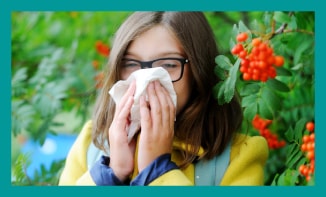Babies & Children’s Health
TREATMENTS MENU:
Sometimes a child’s health comes down to a simple formula: Fever? Pass the ibuprofen. But when matters are more complicated—for instance, when there’s a chronic condition, like asthma, eczema, IBS, allergies, or a stress-related ailment, like migraines—popping a pill may not be enough. We like to implement a mainstream approach here to give patients more options for their child’s care. To assist a child to be healthy, and keep them that way, we consider every aspect of their lifestyle—diet, environment and way of handling stress.
The use of complementary and alternative medical (CAM) therapies is increasing considerably in paediatric as well as adult populations. Approximately 20–30% of general paediatric patients have used one or more complementary and alternative medicine therapies and use among adolescents ranges from 50% to 75%. Rates among patients with chronic, recurrent, or incurable conditions, such as those with cancer, asthma, rheumatoid arthritis, and cystic fibrosis range from 30% to 70%.
We have achieved successful outcomes working with children, parents and their primary healthcare providers in order to give a well-rounded and person-centred approach to paediatric wellness. We also give treatment for ADHD.
Treatment for ADHD
 ADHD is a disorder that makes it difficult for a person to pay attention and control impulsive behaviours. He or she may also be restless and almost constantly active.
ADHD is a disorder that makes it difficult for a person to pay attention and control impulsive behaviours. He or she may also be restless and almost constantly active.
To understand ADHD, think of the brain as having crisscrossing wires that go in many directions. For most people, a thought moves from point A to point B. For someone with ADHD, a thought starts out at point A, but before it gets to point B, points C and maybe even D capture their attention first. They become completely distracted before point B. This isn’t lack of attention. In fact, a child with ADHD pays attention to and becomes interested in nearly everything they hear and see. They focus on one extremely interesting subject, blocking out everything else. To a parent or teacher, this looks like a child with ADHD is ignoring them.
ADHD is not just a childhood disorder. Although the symptoms of ADHD begin in childhood, ADHD can continue through adolescence and adulthood. Even though hyperactivity tends to improve as a child becomes a teen, problems with inattention, disorganisation, and poor impulse control often continue through the teen years and into adulthood. Out treatment for ADHD embraces all ages.
Researchers at the National Institute of Mental Health (NIMH), National Institutes of Health (NIH), and across the country are studying the causes of ADHD. Current research suggests ADHD may be caused by interactions between genes and environmental or non-genetic factors. Like many other illnesses, a number of factors may contribute to ADHD such as genetics, environment, food intolerances, toxicity, and a poor diet. Our treatment for ADHD includes functional medicine tests.
While medication and behaviour modification certainly help, diet also plays a role. Our treatment goal for ADHD is to make life at school and at home easier for everyone, but also to show that ADHD is not a bad thing. Children with ADHD are often remarkably smart and creative. With the correct treatment for ADHD, they may become future leaders, creators, artists, and scientists.
If you would like to book an appointment
Contact Deborah’s Medical Secretary for an appointmentFailure to Thrive
 What is failure to thrive?
What is failure to thrive?
Children are diagnosed with failure to thrive when their weight or rate of weight gain is significantly below that of other children of similar age and sex. Infants or children that fail to thrive seem to be dramatically smaller or shorter than other children the same age. Teenagers may have short stature or appear to lack the usual changes that occur at puberty. However, there is a wide variation in what is considered normal growth and development.
Symptoms
Infants or children who fail to thrive have a height, weight and head circumference that do not match standard growth charts. The person’s weight falls lower than the third percentile (as outlined in standard growth charts) or 20 percent below the ideal weight for their height. Growing may have slowed or stopped after a previously established growth curve.
The following are delayed or slow to develop:
- Physical skills, such as rolling over, sitting, standing and walking
- Mental and social skills
- Secondary sexual characteristics (delayed in adolescents)
Treatment
The treatment depends on the cause of the delayed growth and development. These causal factors can include endocrine issues (hormonal factors), chronic infections, gut health, emotional health and previous complications in pregnancy. Delayed growth due to nutritional factors can be resolved by a tailored nutritional plan and other treatments will address each root cause with natural medicine and a bespoke plan.
If you would like to book an appointment
Contact Deborah’s Medical Secretary for an appointmentOCD
 Obsessive-compulsive disorder (OCD) is a brain-based anxiety disorder. Obsessions are ideas, thoughts, impulses, or images that keep coming back. They are not enjoyable, rather obsessions are unwanted and upsetting, causing severe anxiety or distress. The content of these obsessions is sometimes grouped into different areas, including: aggression (fears of harming others), contamination (fears of being dirty), sex, religion, and exactness. What separates OCD obsessions from normal obsessions experienced by everyone are the frequency, intensity, and discomfort. OCD sufferers attach much greater meaning and threat to these thoughts than others. The obsessions won’t just “go away.”
Obsessive-compulsive disorder (OCD) is a brain-based anxiety disorder. Obsessions are ideas, thoughts, impulses, or images that keep coming back. They are not enjoyable, rather obsessions are unwanted and upsetting, causing severe anxiety or distress. The content of these obsessions is sometimes grouped into different areas, including: aggression (fears of harming others), contamination (fears of being dirty), sex, religion, and exactness. What separates OCD obsessions from normal obsessions experienced by everyone are the frequency, intensity, and discomfort. OCD sufferers attach much greater meaning and threat to these thoughts than others. The obsessions won’t just “go away.”
In order to cope with the obsessions, people with OCD engage in repeated behaviors or thoughts, known as compulsions, to make themselves feel safer. Compulsions are rituals that the person believes reduce the risk of the obsessions coming true, or at least reduce the anxiety they produce. However, the compulsions are not really useful. They do not prevent the feared consequence or are clearly excessive. Compulsions or rituals take up so much time that they get in the way of work, school, and family obligations.
Researchers have classified the many symptoms of OCD into four categories:
- Contamination and Washing
- Doubts About Accidental Harm and Checking
- Symmetry, Arranging, Counting, and Just Right OCD
- Unacceptable Taboo Thoughts and Mental Rituals
Causes
Doctors and researchers are divided on what causes OCD but many believe OCD is the result of abnormal brain circuitry function. A recent study showed that inflammation of the brain tissue was 32 per cent higher in the brains of OCD sufferers compared to others.
If you would like to book an appointment
Contact Deborah’s Medical Secretary for an appointmentAllergies/Intolerances
 What is a food allergy?
What is a food allergy?
A food allergy is an immune system response. It is caused when the body mistakes an ingredient in food — usually a protein — as harmful and creates a defence system (antibodies) to fight it. An allergic reaction occurs when the antibodies are battling an “invading” food protein. The most common food allergies are shellfish, nuts, fish, eggs, peanuts, and milk.
What is food intolerance?
Food intolerance is a digestive system response rather than an immune system response. It occurs when something in food irritates a person’s digestive system or when a person is unable to properly digest, or break down, the food. Intolerance to lactose, which is found in milk and other dairy products, is the most common food intolerance.
How common are food allergies and intolerances?
Food allergies affect about 1 percent of adults and 7 percent of children, although some children outgrow their allergies. Food intolerances are much more common. In fact, nearly everyone at one time has had an unpleasant reaction to something they ate. Some people have specific food intolerances.
How can you tell the difference between an allergy and intolerance to food?
Food allergies can be triggered by even a small amount of the food and occur every time the food is consumed. People with food allergies are generally advised to avoid the offending foods completely. On the other hand, food intolerances often are dose related; people with food intolerance may not have symptoms unless they eat a large portion of the food or eat the food frequently. For example, a person with lactose intolerance may be able to drink milk in coffee or a single glass of milk, but becomes sick if he or she drinks several glasses of milk. Food allergies and intolerances also are different from food poisoning, which generally results from spoiled or tainted food and affects more than one person eating the food. Your health care provider can help determine if you have an allergy or intolerance, and establish a plan to help control symptoms.
What are the symptoms of a food allergy?
Symptoms of a food allergy can range from mild to severe, and the amount of food necessary to trigger a reaction varies from person to person. Symptoms of a food allergy may include:
- Rash or hives
- Nausea
- Cramping stomach pain
- Diarrhoea
- Itchy skin
- Shortness of breath
- Chest pain
- Swelling of the airways to the lungs. Anaphylaxis is a very serious and potentially fatal allergic reaction that involves a sudden drop in blood pressure, loss of consciousness and body system failure.
What are the symptoms of food intolerance?
Symptoms of food intolerance include:
- Nausea
- Stomach pain
- Gas, cramps or bloating
- Vomiting
- Heartburn
- Diarrhoea
- Headaches
- Irritability or nervousness
What causes food allergies and intolerances?
Food allergies arise from sensitivity to chemical compounds (proteins) in food, even compounds that are found naturally in food. Food allergies are more common in people whose family members have allergies, suggesting a genetic — or hereditary — factor may be involved with the development of food allergies.
Food allergies develop after you are exposed to a food protein that your body thinks is harmful. The first time you eat the food containing the protein, your immune system responds by creating specific disease-fighting antibodies (Contacted immunoglobulin E or IgE). When you eat the food again, it triggers the release of IgE antibodies and other chemicals, including histamine, in an effort to expel the protein “invader” from your body. Histamine is a powerful chemical that can affect the respiratory system, gastrointestinal tract, skin or cardiovascular system.
The allergy symptoms you have depend on where in the body the histamine is released. If it is released in the ears, nose and throat, you may have an itchy nose and mouth, or trouble breathing or swallowing. If histamine is released in the skin, you may develop hives or a rash. If histamine is released in the gastrointestinal tract, you likely will develop stomach pains, cramps or diarrhoea. Many people experience a combination of symptoms as the food is eaten and digested.
There are many factors that may contribute to food intolerance so at the Harley Street IBS and Autoimmune clinic, we will work with each patient to discover the factors underlying these symptoms, and treat them.
If you would like to book an appointment
Contact Deborah’s Medical Secretary for an appointment